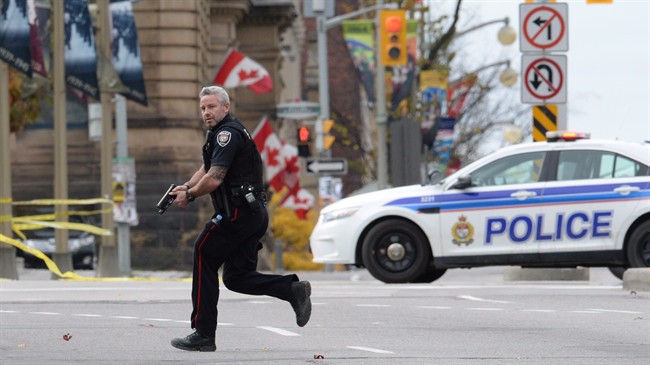It takes an average of one year for Canadians who may be radical to be “mobilized to violence” or terrorism, according to a new report from Canada’s intelligence agency.

In the report, Mobilization to Violence, the Canadian Security Intelligence Service reviewed approximately 100 cases of “individuals who mobilized to violence in Canada.”
Since, as the report states, “not all extremists progress from words to deeds,” the report shows the trends of the 100 cases, hoping to find out the circumstances on how a person with radical views becomes moved into violence.
“Just having radical ideas isn’t a very reliable indicator that you’re necessarily going to go ahead and do anything violent or illegal,” said Lorne Dawson, co-director of the University of Waterloo’s Canadian Network for Research on Terrorism, Security and Society.
Dawson said the number is significant because most people would assume it takes less time.
“It suggests the whole process is longer, more involved than on the surface it appears because people are very secretive about it,” he said. “They keep it very quiet. They definitely don’t let their family or people around them have any idea what’s happening.”
But we should keep in mind that it’s an average, Dawson said. That means there are cases where it is very quick or much slower.
Fact check: Are Liberals welcoming ISIS returnees to Canada with open arms?
Amarnath Amarasingam, postdoctoral fellow at the University of Waterloo, where he co-directs a study on western foreign fighters, said he would be wary of this number because it’s a very personal issue.
“It’s really a case by case thing,” he explained. “Every individual has different pathways, and different trigger events that may push them to see violence locally or travelling abroad as a necessity or obligation for them.”
The report found that younger people mobilize quicker, likely because there are fewer obstacles for them.
But while there are trends, the “process is highly individualized, meaning that what is logical and sequential for one person may not necessarily be the case for another person.”
‘Leakage’: Bystanders knew about intent of extremist mobilizers
The report says in most cases, there was what officials called “leakage.” That’s where bystanders or those around the extremist mobilizer knew about the intent of the person before they committed their act of violence.
“In other words, people who are radicalizing and then people who are mobilizing do talk to a lot of people about it,” Dawson explained. “It’s really sort of a sad commentary that more people who hear them say these things don’t report it.”
He said a report like this from CSIS could offer a public education aspect to let more bystanders know to recognize the signs.
Signs of mobilization to violence:
- change in physical routine
- financial activities to raise money – like maxing out a credit card or selling belongings
- getting personal affairs in order (like writing wills or paying debts)
- RCMP arrests alleged hitmen accused of killing B.C. Sikh leader
- Fall COVID-19 vaccine guidelines are out. Here’s what NACI recommends
- Some 2019 candidates ‘appeared willing’ to engage with foreign interference: Hogue inquiry
- Thousands of Canada’s rail workers have a strike mandate. What happens now?
Criminality only present in quarter of those motivated to violence
The report found that 27 per cent of people the cases studied had criminal histories – and on average, that criminal activity happened four years prior to mobilization.
The report states that’s a completely different finding to the cases of extremism in Europe.
Dawson also said that people might associate terrorists with previous criminal activity because terrorism is also a crime, but this shows otherwise.
“The radicalizing itself is turning to a moral perspective. It almost always involves going from leading a life that’s less moral to one that’s more moral,” he said, explaining that “morality” is defined differently for someone who’s radicalized.
“What they do is they usually, individuals stop drinking and start praying more — starts you know, reading their Qur’an if they’re jihadist, or if they’re Christian, reading the Bible.”
Amarasingam said this statistic is a good starting point because there’s a debate about “the nexus between crime and terror that is currently underway.”
“There is of course the ongoing question of what kinds of criminal pasts may influence radicalization later on, whether such cause and effect relationships can ever be drawn and so on,” he explained. “The report doesn’t weed into these debates, but it provides some evidence, based on a fairly large data set, that researchers can use in their own work.”









Comments